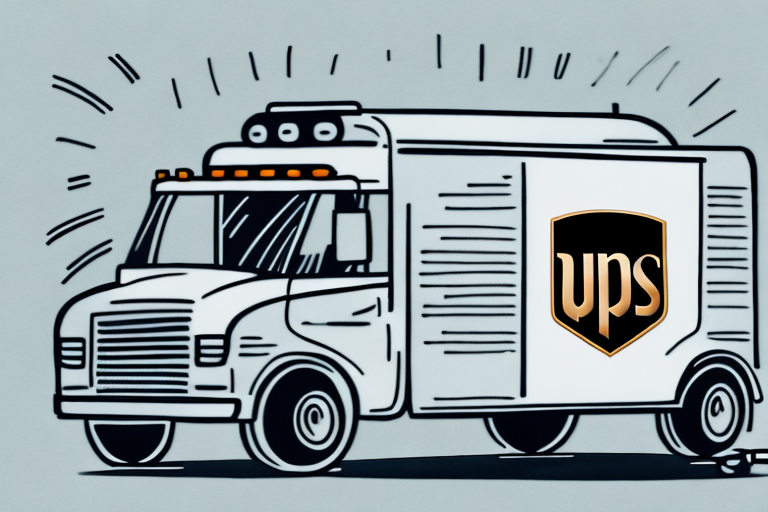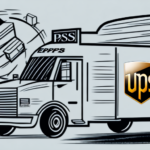Understanding UPS Signature Requirements
UPS is one of the leading shipping companies worldwide, handling millions of packages each day. Ensuring the safe and secure delivery of packages is paramount, which is why signature requirements play a crucial role in UPS's delivery process. This guide provides an in-depth analysis of UPS signature requirements, helping you make informed decisions for your shipments.
The Importance of Signature Confirmation
Signature confirmation is a vital component of the UPS delivery process. It verifies that the package is received by the intended recipient, thereby reducing the risk of theft, loss, or damage. This service is particularly beneficial for valuable or sensitive items, offering an additional layer of security and peace of mind.
According to UPS, signature confirmation helps in resolving disputes between senders and recipients by providing proof of delivery. This is especially important for businesses shipping high-value items or legal documents, ensuring accountability and reliability in the shipping process.
Determining If Your Package Requires a Signature
Checking Tracking Information
You can easily determine if your UPS package requires a signature by checking the tracking information on the UPS website or mobile app. Look for the “Signature Required” notation in the package details.
Reviewing Shipping Method
The shipping method selected during the shipment process can also dictate signature requirements. For example:
- UPS Next Day Air and UPS Worldwide Express typically require a signature upon delivery.
- UPS Ground and UPS SurePost usually do not require a signature.
If you're shipping a valuable or fragile item, it's advisable to require a signature regardless of the shipping method to ensure secure delivery.
Signature Requirements for Different Package Types
UPS imposes specific signature requirements based on the type of package being shipped:
- Alcoholic Beverages and Tobacco Products: Must be signed for by an adult (21 years or older).
- High-Value Items: May require a direct signature from the recipient or an authorized representative.
- Legal Documents: Often necessitate a signature to ensure secure and verifiable delivery.
Understanding these specific requirements can help prevent delivery issues and ensure that your package reaches the intended recipient without complications.
Signature Release and Authorization Options
Signature Release Authorization
UPS offers a “signature release authorization” service that allows the driver to leave the package at the delivery location without obtaining a signature. This option is useful for recipients who may not always be available to sign for packages.
UPS My Choice
With the UPS My Choice service, customers can customize their delivery preferences, including authorizing drivers to leave packages without a signature, scheduling delivery times, or redirecting packages to a UPS Access Point location for convenient pick-up.
It's important to note that while these options offer flexibility, they may come with additional fees and responsibilities. For instance, opting for signature release means you assume responsibility for the package once it's delivered, increasing the risk of loss or theft.
Handling Undelivered Packages
If no one is available to sign for a package, UPS typically makes up to three delivery attempts. If the package remains undelivered after these attempts, it may be held at a UPS location for pick-up or returned to the sender.
UPS Access Point Locations
The UPS Access Point service allows customers to redirect packages to nearby retail locations for convenient pick-up, reducing the likelihood of missed deliveries and ensuring secure receipt of packages.
In cases where specific signatures are required, such as adult signatures or direct signatures from the recipient, UPS will not deliver the package unless these conditions are met. This ensures that sensitive or high-value items are handled appropriately.
Best Practices for Managing UPS Deliveries and Signatures
- Choose Appropriate Delivery Windows: Schedule deliveries when someone is available to receive and sign for the package.
- Utilize UPS My Choice: Customize delivery preferences to better manage when and how packages are delivered.
- Redirect to UPS Access Points: For added convenience and security, consider having packages delivered to a nearby UPS Access Point.
- Monitor Tracking Information: Regularly check the status of your package to anticipate delivery and ensure someone is available to sign.
Implementing these best practices can significantly enhance the delivery experience, ensuring packages are received promptly and securely.
Changing Signature Requirements
If you need to modify the signature requirements for an existing UPS shipment, you can do so through the UPS My Choice service or by contacting UPS customer support directly. However, changes may not be possible for all shipments and may incur additional fees.
Before making any changes, consider the potential risks and benefits. For example, waiving the signature requirement can expedite delivery but may increase the risk of package theft. Conversely, requiring a signature enhances security but may lead to missed deliveries if recipients are unavailable.
Pros and Cons of Requiring a Signature for UPS Deliveries
Benefits
- Enhanced Security: Ensures packages are delivered to the correct recipient, reducing the risk of theft and loss.
- Proof of Delivery: Provides verifiable confirmation that the package was received, which is valuable for both senders and recipients.
- Peace of Mind: Offers assurance to customers that their valuable or sensitive items are handled securely.
Drawbacks
- Additional Costs: Signature confirmation services may incur extra fees.
- Delivery Delays: Requiring a signature can result in multiple delivery attempts if the recipient is not available, potentially delaying receipt.
- Inconvenience: May require the recipient to adjust their schedule to be available for delivery, which can be inconvenient.
Weighing these pros and cons will help you determine whether requiring a signature aligns with your shipping needs and priorities.
Conclusion
Understanding UPS's signature requirements is essential for ensuring that packages are delivered securely and efficiently. By familiarizing yourself with the various signature options and best practices, you can optimize your shipping process, reduce the risk of delivery issues, and enhance overall satisfaction for both senders and recipients.
Always consider the nature of your shipment, the value of the items, and the preferences of the recipient when deciding on signature requirements. Utilizing services like UPS My Choice can provide additional flexibility and control over your deliveries, ensuring that your packages arrive safely and on time.






















